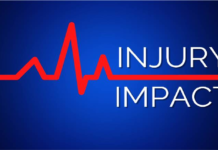Do two LGBT Pride marches in New York City taking place on the same day next month show the failure of Pride to accommodate everyone, or the acceptance that Pride means very different things to very different people?
Does the presence of two marches symbolize fracture at a time when the LGBT community would be better placed to come together to face down common homophobic foes, or is it a sign of healthy plurality, a true showing of how diverse the LGBT community is, and a timely opportunity to engage in voluble political protest?
On Sunday, June 30, you will be able to take your practical and philosophical pick (or do both) between two very different Pride marches in New York City.
The main NYC Pride March, organized by Heritage of Pride, sets off at noon in the shadow of the Flatiron Building, from 26th Street and Fifth Avenue, making its way downtown to Greenwich Village and the Stonewall Inn, before switching to come uptown and finishing at 23rd Street and Seventh Avenue. (This is good, if inevitably chaotic, news for my excellent local diner, the Malibu, on that very corner.)
Four million people are expected to attend—this year not only marks the 50th anniversary of the Stonewall Riots, but it is also World Pride. Organizers expect New York City to be bursting at the seams with LGBT people from all over the world.
The breakaway Queer Liberation March, organized by the Reclaim Pride Coalition, begins earlier, at 9:30 a.m. that day, on Seventh Avenue, just below Christopher Street—so within sight of the Stonewall—before heading across West 10th Street to Sixth Avenue, and then an epic urban march north to Central Park, entering it at 59th Street and Sixth Avenue before a planned rally on the Great Lawn.
It is a replication of the route taken by the marchers of the first Pride march, then known as the Christopher Street Day Liberation March, in 1970.
The 2019 march has been organized by the Reclaim Pride Coalition because of what it sees as the over-corporatization of the main event and the presence of police both marching and patrolling at it; the cops’ presence is seen as problematic by the Reclaim Pride Coalition because of the police’s past homophobia.
The Queer Liberation March proudly boasts no corporate floats, although some police will be on hand, alongside trained marshals, as the march wends its way north from Greenwich Village. It has been endorsed by more than 100 organizations.
The existence of two marches may seem inevitable to those who have followed the years-long saga that pits the large march—with its raft of big-name sponsors, attended and applauded by thousands watching from the sidewalks—against those on the gay left who think that the march has become too bloated and too in hock with those sponsors and certain groupings, like the police or military, that march in the parade.
Similar controversies have flared in New York and at many other Prides, including in cities like Washington, D.C., and Minneapolis, in recent years.
For many, there has been a desire for the Pride march to return to be exactly that, and to be focused on angry and energetic demands for LGBT equality, especially now that the hard-won rights of LGBT people are imperiled under an aggressively anti-LGBT Trump administration.


















